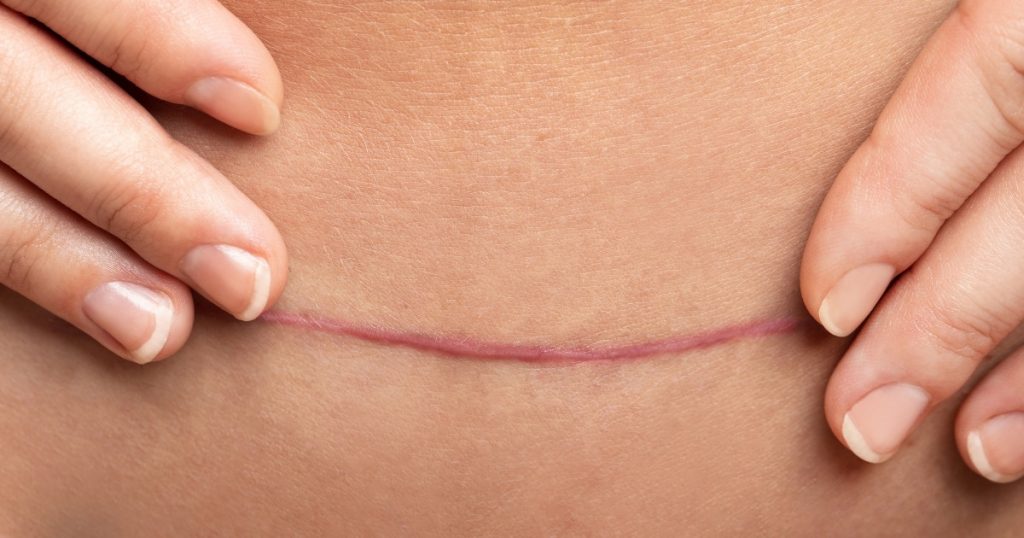Tummy tuck procedure s carry risks of complications both during and after surgery. However, awareness and preventive steps can reduce the chances of issues arising. This guide covers common tummy tuck complications, their contributing factors, warning signs to monitor for, and measures to avoid problems.
What are the most common tummy tuck complications?

The most common major complications after tummy tuck surgery include hematomas, infections, blood clots, and lung-related issues. The complication rate is higher when tummy tucks are combined with other body contouring procedures.
- Overall complication rate of 4%, higher than other cosmetic surgeries
- Hematoma is the most frequent major complication
- Infection risk increased with larger surgical areas
- Combining procedures raised complications to over 10%
How can I reduce my risk of tummy tuck complications?
Choose an experienced, board-certified plastic surgeon, follow pre- and post-op instructions carefully, and consider staged procedures if combining multiple surgeries. Controlling risk factors like obesity and smoking can also help.
- Pick a qualified, high-volume surgeon.
- Follow all pre- and post-op directions.
- Stage procedures to lower risks
- Optimise modifiable risk factors
What are the signs of an infection after a tummy tuck?
Signs of surgical site infection after a tummy tuck include increasing pain, swelling, redness, warmth, drainage, and fever. Contact your surgeon right away if you notice these.
Book A Consultation With Dr Shehzadi Tasneem
Top-rated Plastic Surgeon For Tummy Tuck in Dubai
Installment Plan Available
| Sign | Description |
| Increased pain | At the surgical incision site |
| Swelling/redness | Of the abdomen |
| Drainage | Pus drainage |
| Fever | Spike over 101°F |
Infections usually present with localised and systemic symptoms. Rapidly worsening pain, discharge, or fever should prompt urgent evaluation.
Can a hematoma after a tummy tuck be life-threatening?
Large hematomas may require emergency surgery to drain, as they can potentially compress vital structures. Infection risk also rises with hematomas. While not common, it’s important to monitor for signs of hematoma and contact your surgeon promptly if these occur.
- Large hematomas may require urgent surgery.
- Can put pressure on critical anatomical structures
- Raise odds of wound infection
- Important to watch for signs of hematoma
- Call the surgeon quickly if you suspect hematoma
What causes seromas after a tummy tuck, and how are they treated?
Seromas are fluid pockets that result from tissue disruption and impaired drainage during surgery. They are common after tummy tucks and usually resolve on their own. For persistent or large seromas, drainage with a needle may be required.
- Pockets of fluid forming from surgical trauma
- Very common after tummy tuck procedures
- Usually resorb spontaneously over weeks
- Large seromas can be drained with a needle
- It may require multiple drainage procedures
- Chronic seromas may need surgical treatment
What steps can I take to prevent blood clots after a tummy tuck?
Strategies to reduce venous thromboembolism risk include stopping smoking, using compression stockings, doing periodic leg exercises, early ambulation, and potentially taking medications if the risk is very high, based on your surgeon’s assessment.
- Quit smoking well in advance of surgery
- Use compression stockings and leg pumps
- Do leg exercises frequently
- Get up and walk around early on
- Medication if the risk is very elevated
- Strict adherence cuts risk drastically
How long does swelling typically last after a tummy tuck?
It is expected to have mild to moderate swelling lasting 6 months or longer after a tummy tuck. Maximising compression garments and activity within limits during this time can help facilitate drainage and resolution of swelling.
| Time period | Explanation |
| Over 6 months | Very common duration |
| Up to 1 year | For residual swelling resolution |
| Long term | Compression helps resolve swelling |
Swelling lasting many months postoperatively is typical after tummy tuck procedures. Patience is required while it slowly improves.
What causes necrosis or tissue death after a tummy tuck?
Compromised blood supply leads to necrosis of fat and occasionally skin. Key factors include surgical trauma, tension on closure, and risk factors like smoking. Staying close to the recommended surgical technique helps prevent this.
- Loss of adequate blood supply
- Excess surgical trauma reduces perfusion
- Smoking and tension raise the odds
- Staying close to the proper technique protects circulation
Can nerve damage occur with a tummy tuck, and is it permanent?
Damage to sensory nerves can occur during tissue dissection and lead to numbness, which is usually temporary, but numbness persisting over a year is not uncommon. Permanent severe nerve injury is infrequent with tummy tucks. ” Essential Abdominoplasty: Thorough Guide ” is a detailed book that helps you understand everything about a tummy tuck surgery. It’s like a helpful guide for people who want a flatter belly.
The Superior Belly Flattening Procedure is a special method used by doctors to make your tummy flat and slim. It’s like a magic trick to remove extra fat from your belly! Tummy tuck swelling reduction means helping your belly get less puffy after surgery by resting and following the doctor’s advice
Abdominoplasty incision techniques Doctors make special cuts on the tummy to remove extra skin and fat during a tummy tuck surgery These cuts are carefully planned to hide scars and give the best results
- Sensory nerves can be damaged by surgery
- Results in temporary or permanent numbness
- Partial sensation often returns over months
- Uncommonly leads to severe permanent damage
How can I best take care of my incision to minimise scarring?

Appropriately caring for the incision with silicone sheeting and scar massage reduces the final scar appearance. Avoiding sun exposure, tension on the closure, and infection optimises the ultimate scar.
- Use silicone sheets starting when approved.
- Perform scar massage daily.
- Always protect the scar from sun damage
- Surgical tape can help support healing
- Ensure proper wound care to prevent infection
- Avoid activities placing tension on closure
Tummy tucks alter complex abdominal anatomy, so some hazards are inherent. Still, selecting an expert surgeon, controlling risks within your power, following all pre- and post-operative directions, and closely monitoring for signs of complications can significantly improve your chances of an optimal outcome after abdominoplasty.
Staying informed on the potential issues and how to avoid them is key to safely attaining your aesthetic goals. With proper precautions, you can feel confident about minimising the likelihood of the most common tummy tuck complications.
Dr Shehzadi Tasneem Sultan is an acclaimed plastic surgeon. She excels in body contouring and facial rejuvenation. Her extensive training includes a medical degree from one of Pakistan’s leading colleges and a Fellowship in Plastic Surgery. Dr Sultan’s expertise covers many aesthetic procedures, ensuring personalised care that enhances natural beauty and boosts confidence.
Transform your appearance with Dr Shehzadi Tasneem Sultan. Book a consultation for expert body contouring and facial rejuvenation and benefit from her commitment to innovative, personalised treatments. Start your journey to a confident new you by booking your consultation today.












